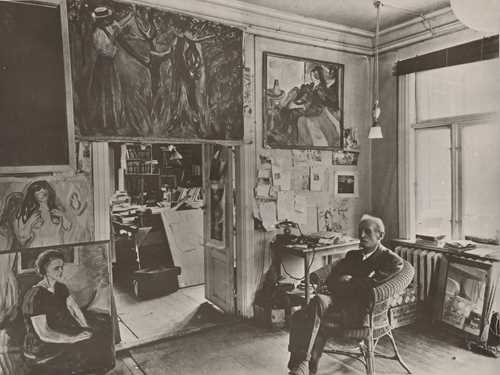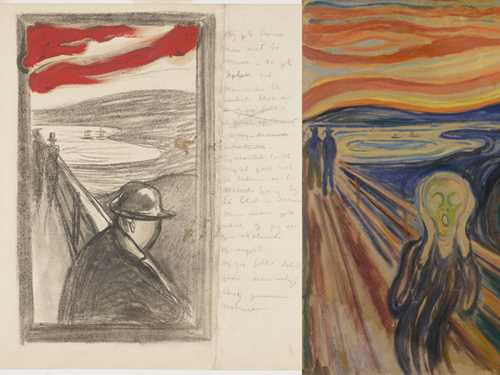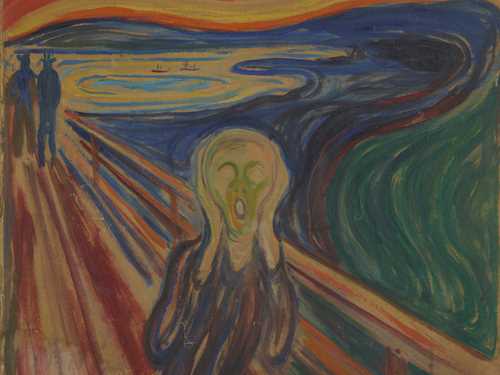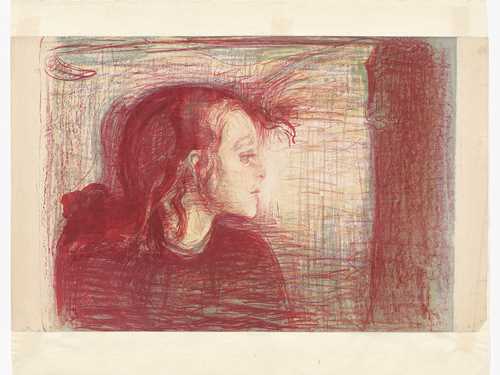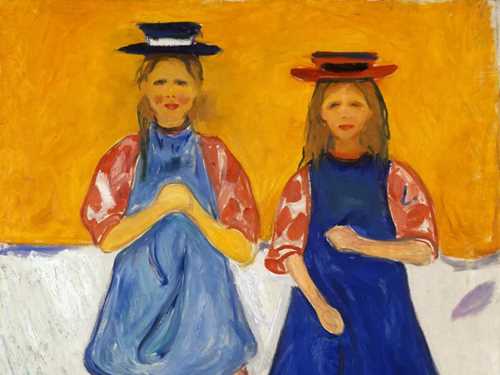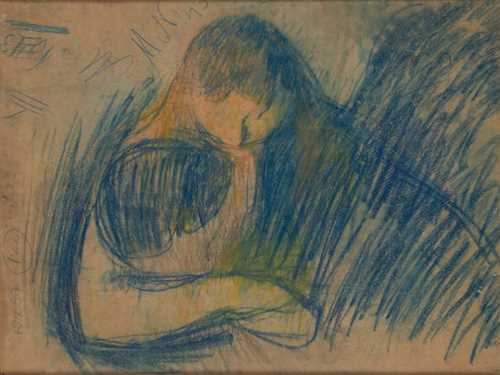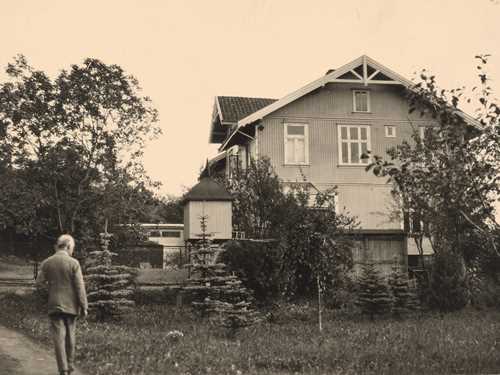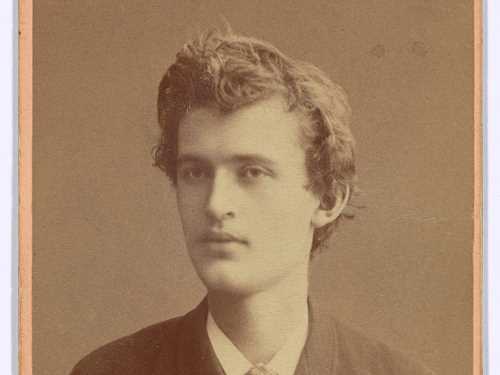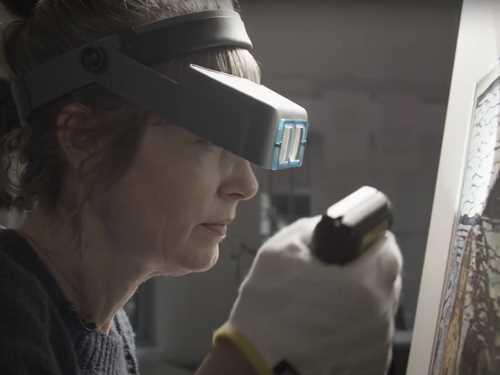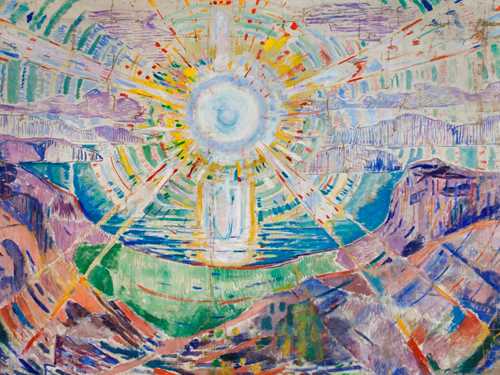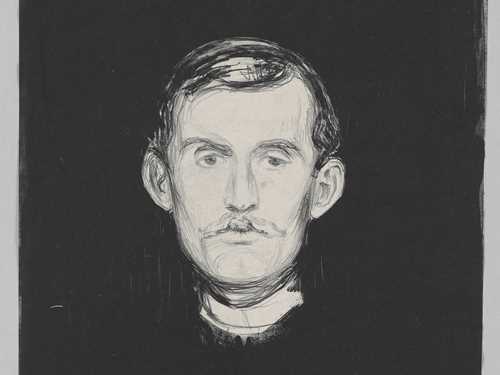10 things you may not know about Edvard Munch
Selfies, pieces of canvas hidden in snowballs and contempt for his colleagues – Edvard Munch’s texts, letters and notebooks give us insight into his thoughts, peculiarities and relationships with other people.
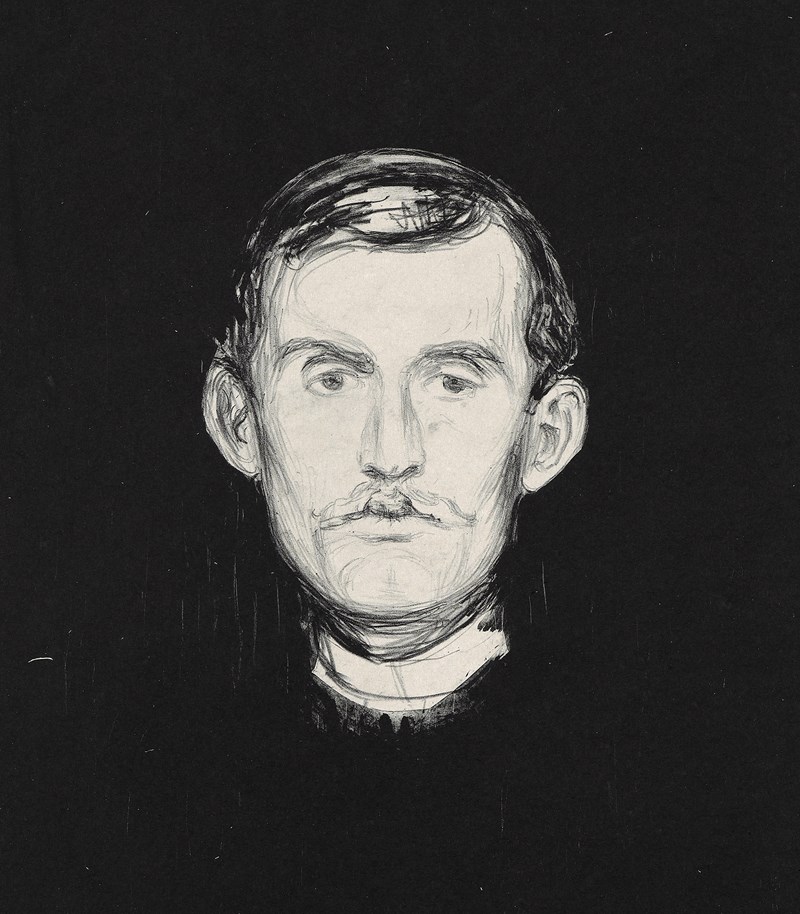
Edvard Munch: Self-portrait. Lithograph, 1985. Photo © Munchmuseet
1. He didn’t always take care of his art
In his large villa at Ekely Munch’s pictures, tools and books were scattered all over the place. Many of his pictures were even stored outdoors, and human footprints and traces of dog paws have been found on both prints and drawings. To this day, remains of water damage, bird droppings and candle wax may be spotted on several of his paintings.
The painting Bathing Young Men in the garden at Åsgårdstrand.
Photo © Munchmuseet
When Munch’s art collection was bequeathed to the City of Oslo upon his death in 1944, a thawed snowball revealed fragments of the painting Workers in Snow (1913–15). You can read more about the conservation of Munch’s legacy here.
2. He “invented” the cell phone
Well, at least as an idea. In an undated draft of a letter to his friend, the Danish painter Jens Willumsen, Munch wrote:
“Had I been in possession of the as yet undiscovered little remote telephone which one carries around in one’s pocket, you would have long ago received communications from me.”
Munch took great interest in technical innovations, and acquired a film camera, a parlograph (to record voices), a camera, a telephone and a radio.
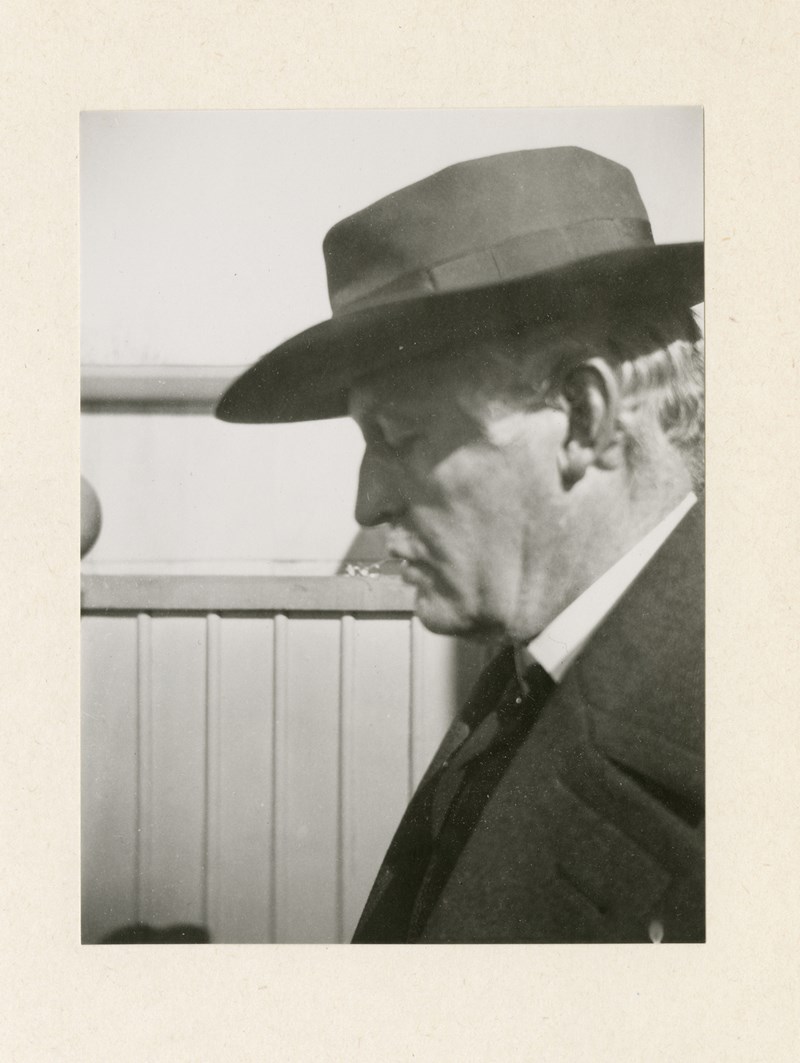
Edvard Munch: Self-portrait in profile with hat, on the steps of the winter studio at Ekely, 1930. Photo © Munchmuseet
3. He was envious of Gustav Vigeland
Munch received a lot of attention abroad, but in Norway he was somewhat envious of his rival, the sculptor Gustav Vigeland, especially after work on the Vigeland Sculpture Park started around 1920. In his notes Munch compared the public funding the two artists received:
“We read about the millions granted for Vigeland's so-called gift. My artworks are as important as his for the art community and the country alike. They also need lots of space and money in order to be executed and shared.”
In another note, Munch wrote: “Yes, people are different. Look at how we make a fuss over Vigeland. A mere spit from him, and we preserve it in gold.”
Edvard Munch: Jealousy. Oil on canvas, 1913. Photo © Munchmuseet
Many amusing quotes may be found in Munch’s letters and notebooks. Several of them are digitised and available to the public here.
4. He eventually became a vegetarian
Late in life Munch stopped eating meat. He did, however, continue to eat fish, so it would perhaps be correct to call him a pescatarian. In a letter to his friend Jens Thiis, probably from around 1932–33, Munch writes:
"As a member of the vegetarian cult, I say: Convert from Cannibalism! Do not eat your uncles, aunts and little cousins with shiny eyes. Eat instead, like the lamb, the lily, Lily of the Valley and the grass. You are in fact half vegetarian already – Cognac, burgundy wines and champagne are the blood of the grape.”
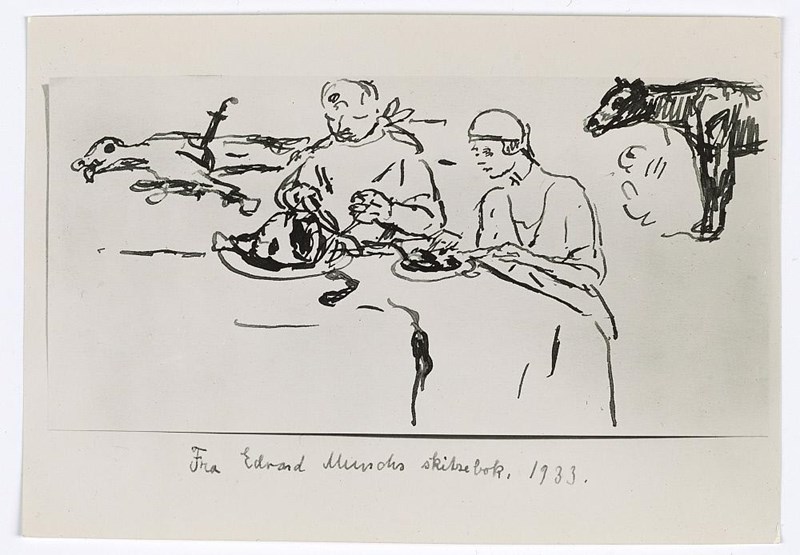
Perhaps this was how Edvard Munch regarded those who ate meat? Drawing, 1933.
Photo © Munchmuseet
5. He drew caricatures of his enemies
Munch argued with and picked on members of his previous circle of friends, such as the painter Christian Krohg and the authors Gunnar Heiberg and Sigurd Bødtker, and was annoyed with many art critics, especially those of the daily Aftenposten. Munch chronicled his frustration with others in letters and notebooks, and also drew spiteful caricatures of his enemies.
In a drawing from around 1908, Heiberg and Bødtker, who were associated with the Kristiania Bohemia, the circle Munch frequented in his young days, were immortalised as a type of human swine and an emaciated Poodle in the company of a toad.
Edvard Munch: People and animals. Bødtker, Heiberg and toad. Drawing, 1908–09. Photo © Munchmuseet
6. He took lots of selfies
An avid photographer, Munch left behind numerous photographs, many of them self-portraits. He photographed himself in front of his paintings, in bed and in the garden – often in profile.
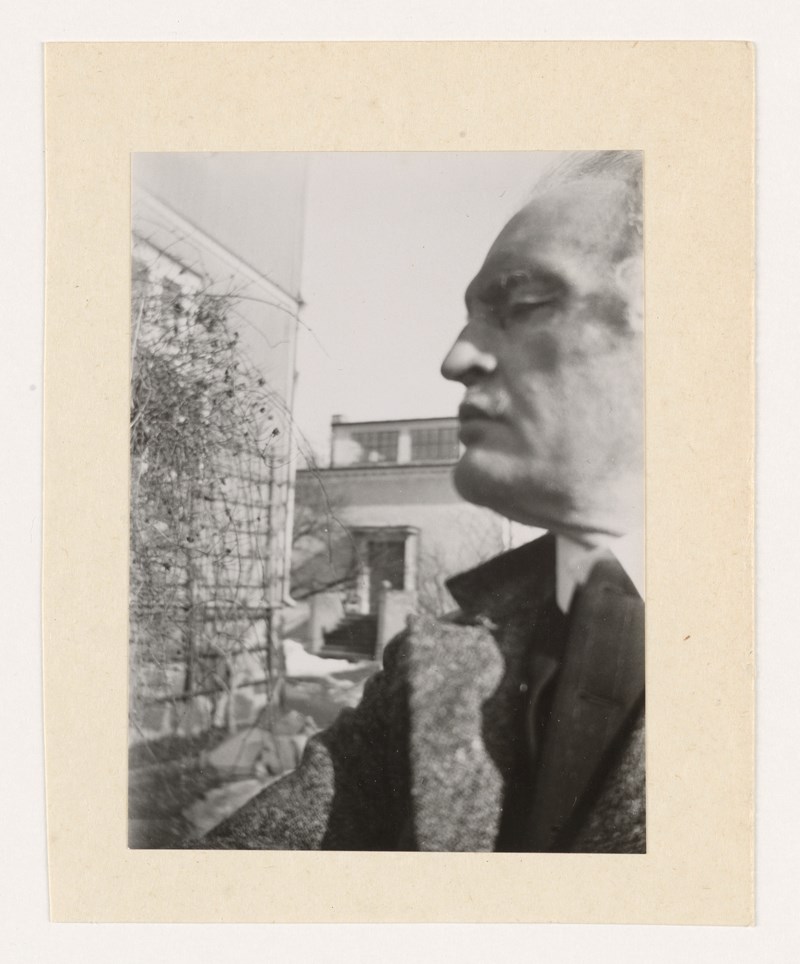
Edvard Munch in Profile in the Garden, with the Winter studio in the Background, 1930. Photo: Edvard Munch. © Munchmuseet
Explore more of Munch’s photographs here.
7. He could have a violent temper
Occasionally Munch would get into a fight. Among his opponents were the painter Johannes von Ditten (whom Munch called The Bandit), the painter Ludvig Karsten and the author Andreas Haukland, to mention a few. In Germany he once almost ended up in a pistol duel, and later noted:
“3 day attack - demolished room in the evening ... 2nd day senseless with the American Doctor. 3rd day – Conflict with the German officers and a foreign host -–threatened one of the sea officers with a fist outside the hall. Short exchange. Once again denied entry to the premises.”
8. He obsessed over matters
Munch found it difficult to let go of matters that annoyed him, including what he referred to as constant harassment and interference by the tax authorities.
He also complained about his neighbours at Ekely, and found a special enemy in Axel Gunnerud and his dog Rolle next door. Around 1920, after the dog had torn off the postman’s pants several times, and had bitten Munch’s leg, the artist reported Gunnerud to the police. The neighbour was fined and Rolle was required to wear a muzzle.
Edvard Munch: Angry dog. Watercolour, 1938–43. Photo © Munchmuseet
9. He cared greatly about his own dogs
To his friend Christian Gierløff, Munch once said that “an old wise man’s soul has taken up residence” in his dog. In a caption below a picture of Fips in the book Edvard Munch Himself (1953), Gierløff quotes Munch’s words. When Munch returned to Norway after years abroad, he always kept one or several dogs. The Fox Terrier Fips soon found company in the rather sedate Gordon Setter Boy and the slightly gloomy Sain Bernhard Bamse (Norwegian for teddy bear). Munch both painted and drew his dogs, but first and foremost they were there to keep him company, and Boy was even occasionally bought his own cinema tickets by his master.
Edvard Munch: Munch's Dog "Fips". Silver Gelatine, 1930. Photo © Munchmuseet
10. He was a daring shoot
Munch owned several handguns which he often used to shoot target, and on one occasion he ended up with a bullet in his finger. In a note from 1905 he claimed to have shot a cigarette out of his painter colleague Ludvig Karsten’s mouth. “Bravely done by Karsten, as for me, madness,” he declared.
Would you like to learn more about Edvard Munch? Read about the most important periods in the artist’s life here.
